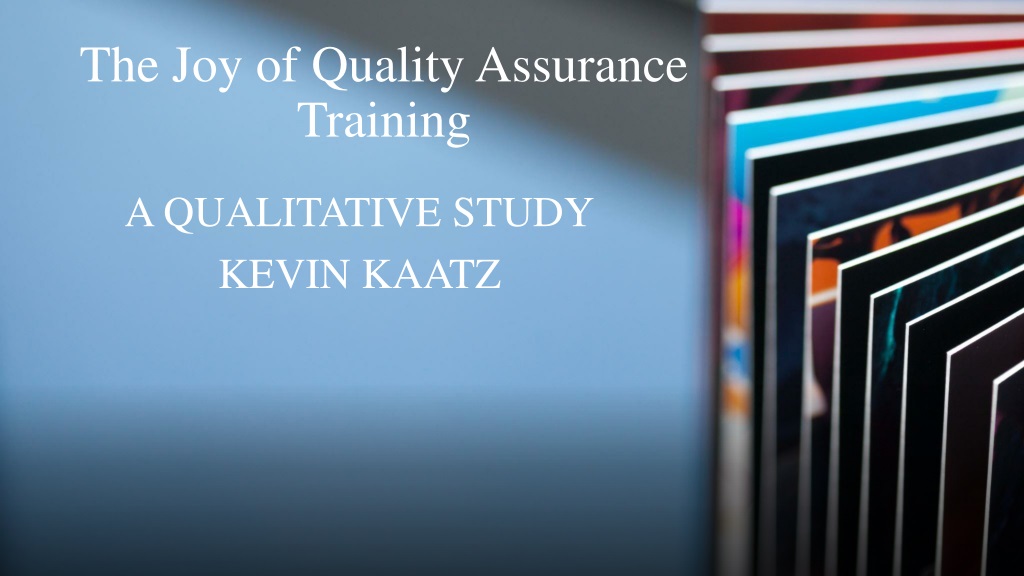

0 likes | 10 Views
This qualitative study examines the effects of quality assurance (QA) training on faculty teaching in online, hybrid, and in-class courses at CSU East Bay. Results show that the majority of faculty found QA training, particularly through QM and QOLT, to be helpful in course organization, alignment, accessibility, and student benefits. Recommendations include expanding QA training to more faculty, offering course development training, and creating rubrics for in-class courses.

E N D
The Joy of Quality Assurance Training A QUALITATIVE STUDY KEVIN KAATZ
WHO AM I? Peer Reviewer Master Reviewer Program Reviewer Worked on the 6thedition of the QM Rubric Faculty Research Associate here at CSU East Bay 2018-2019
The East Bay Campus (CSUEB) is a leader in the California State University (CSU) system in providing quality assurance training to its faculty who teach online and or hybrid courses. There are over 14,000 students and 54% of them have taken either a hybrid or totally online course
Once faculty get quality assurance (QA) training, how does it affect their teaching? What are their perceptions about the training they received?
Question sent to 198 faculty (26 [14% responded) HOW HAS OUR QUALITY ASSURANCE TRAINING (EITHER THROUGH QM, QOLT, OR OLC) HELPED WITH YOUR COURSES (ONLINE, HYBRID, AND/OR IN-CLASS) IN THE FOLLOWING AREAS-- PREPARATION/DESIGN, TEACHING, AND STUDENTS' LEARNING? PLEASE BE AS SPECIFIC AS POSSIBLE, PROVIDE EXAMPLES, AND/OR PROVIDE STUDENTS' FEEDBACK.
Answers were coded and three major categories were revealed: Positive, Not Sure, and Criticisms
96% stated their QA training (mostly QM, some QOLT) was helpful. 2019 CSU-wide survey: Asked if their QA training specifically impacted their teaching effectiveness—74.1% stated that it was “very useful” and 24.5% stated it was “somewhat useful” (these categories were not defined in that survey). 3.4% said it was not useful.
Categories where QA training was useful (6 total): Course organization Alignment Accessibility Student benefits Use of other rubrics Special mention of eSpecialists
Course Organization (42%)
Alignment (24%)
Accessibility (15%)
Student Benefits (15%)
Use of other rubrics (8%)
Special Mention of eSpecialists (8%)
Not sure if QA training was helpful (4%)
Recommendations based on this research: 1. Offer QA training to more faculty who teach online—both lectures and tenure/tenure-track faculty. 2. Start offering some course development training to in-class faculty and to introduce them to the QM/QLT rubrics.
Recommendations based on this research: 3. Create a rubric like QM or QLT specifically for in-class courses. 4. Have workshops on creating alignment maps and making courses accessible, both for online and in-class faculty.
Recommendations based on this research: 5. Make course design/quality assurance training mandatory for M.A./M.S/Ph.D. students who plan on teaching. 6. Make the QM rubric (or some version of it) available to students.
Recommendations based on this research: 7. Hire more eLearning Specialists. 8. It would be useful to do a comparison of student evaluations in online courses with QA-trained faculty vs. non-QA-trained faculty to see if they notice differences.